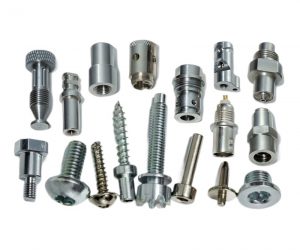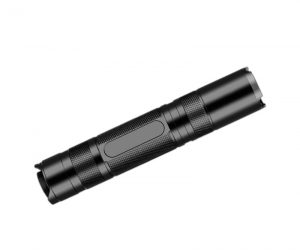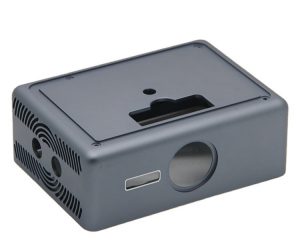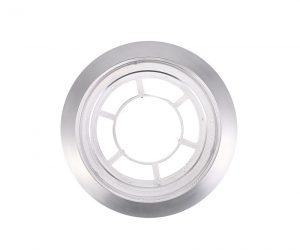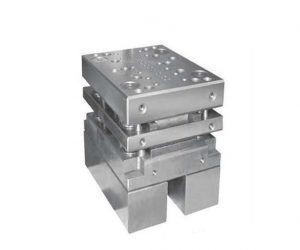Mold lock injection molding is a specialized process used in injection molding to handle highly liquid molten plastic material, ensuring high precision and minimal defects in the final product. This process involves the locking and opening of the mold at strategic points during the injection cycle to manage the flow and solidification of the plastic material, especially for materials with low viscosity and high fluidity. In this guide, we’ll delve into the advantages, disadvantages, applications, best practices, and tips to optimize results with mold lock injection molding.
What is Mold Lock Injection Molding?
Mold lock injection molding uses a locking and opening mechanism that secures the two halves of the mold together during the injection phase and then releases them during the cooling phase. This ensures that no excess material escapes from the mold cavity, preventing flash, which is the thin excess plastic material that can form around the edges of the part.
Key Features of Mold Lock Injection Molding:
- Locking Mechanism: The mold is clamped shut with high force during the injection phase to keep the plastic material contained.
- Opening Mechanism: The mold can be slightly opened during the cooling phase to compensate for material shrinkage, ensuring dimensional accuracy.
- Handling Highly Liquid Materials: The process is ideal for handling plastics with low viscosity, such as polyethylene (PE), polypropylene (PP), and polyvinyl chloride (PVC), which flow easily into the mold but tend to shrink considerably upon cooling.
Advantages of Mold Lock Injection Molding
1. High-Precision and Quality
- The lock mechanism ensures that the mold remains tightly sealed during injection, preventing leaks or flash. This results in a more consistent and precise part with better surface quality and reduced dimensional errors.
2. Flash Prevention
- By securing the mold during the injection phase, mold lock injection molding prevents the escape of plastic material from the cavity. This eliminates the need for post-production trimming or deburring, reducing both time and cost.
3. Improved Mechanical Properties
- The process reduces internal stresses and cracks, leading to better mechanical properties in the molded part. This makes it ideal for applications requiring durability and strength.
4. Reduced Post-Processing
- Since flash and material leakage are minimized, there is less need for trimming or polishing, which streamlines production and reduces overall costs.
5. Increased Productivity
- Mold lock injection molding can potentially lead to faster cycle times due to reduced injection pressure and simplified mold designs. This makes it possible to produce parts more efficiently, increasing output rates.
Disadvantages of Mold Lock Injection Molding
1. Higher Initial Costs
- The equipment required for the locking and opening mechanism can be more expensive than standard injection molding systems. The added complexity of the system results in a higher initial investment.
2. Limited Mold Size
- The size of the mold that can be used is limited by the clamping force and capacity of the locking mechanism. Larger molds may require significantly stronger locking devices, limiting the types of parts that can be produced.
3. Potential Mold Wear and Tear
- The repeated locking and opening cycles can cause wear and tear on the mold, especially if there is misalignment or contamination between the mold halves. Regular maintenance and alignment are required to ensure longevity.
Applications of Mold Lock Injection Molding
Mold lock injection molding is suitable for producing high-quality, precision parts that require intricate details or thin walls. Some of the primary industries and applications include:
1. Medical Devices
- Parts: Syringes, catheters, valves, connectors, implants.
- Benefits: High precision, cleanliness, and compliance with regulatory standards.
2. Packaging
- Parts: Caps, closures, containers, bottles.
- Benefits: Durable, strong, and aesthetically pleasing products.
3. Consumer Products
- Parts: Toys, utensils, appliances, electronic devices.
- Benefits: Complex shapes, functionality, and high-quality finishes.
4. Automotive Components
- Parts: Bumpers, dashboards, door panels.
- Benefits: Lightweight, high-strength parts with good surface quality.
5. Electronics
- Parts: Enclosures, connectors, housings.
- Benefits: High durability, precision, and surface finish suitable for electronic applications.
Best Practices for Mold Lock Injection Molding
To achieve optimal results with mold lock injection molding, several best practices should be followed:
1. Select the Right Material
- Choose materials with low viscosity, high fluidity, and suitable shrinkage characteristics. Materials like PE, PP, and PVC are commonly used in this process due to their properties.
2. Carefully Design the Mold
- The mold should be designed to include adequate venting, cooling channels, and ejection systems. Avoid sharp corners, undercuts, or excessive thin sections, as these can lead to part defects or difficulties with the locking mechanism.
3. Optimize Process Parameters
- Properly adjust injection pressure, speed, holding pressure, and cooling time to ensure correct filling, packing, cooling, and shrinkage. This helps to avoid common issues like short shots, sink marks, and warping.
4. Regular Mold Maintenance
- Regular cleaning, lubrication, and inspection of the locking and opening mechanisms are essential to avoid wear and misalignment, which can affect the mold's performance and longevity.
Tips to Avoid Common Problems and Optimize Results
1. Prevent Short Shots
- Cause: Insufficient material injection or blocked vents.
- Solution: Increase injection pressure and speed, clear vents, or raise material temperature to ensure the mold fills completely.
2. Avoid Sink Marks
- Cause: Excessive shrinkage due to high holding pressure or thick sections.
- Solution: Reduce holding pressure or time, lower the material temperature, or reduce section thickness to prevent excessive shrinkage.
3. Prevent Warping
- Cause: Uneven cooling or variations in wall thickness.
- Solution: Ensure uniform cooling by lowering the mold temperature and designing parts with uniform wall thicknesses.
4. Minimize Wear and Tear on the Mold
- Cause: Repeated locking and opening cycles, misalignment, or contamination between mold halves.
- Solution: Regularly maintain the mold by cleaning, lubricating, and inspecting the locking device. Ensure proper alignment and keep the mold free of contaminants.
Conclusion
Mold lock injection molding is a powerful technology that offers significant advantages in producing high-precision, flash-free parts with excellent surface quality. While it requires a higher initial investment and careful mold design and maintenance, the process delivers considerable benefits in terms of part quality, reduced post-processing, and increased productivity. By following best practices and optimizing process parameters, manufacturers can achieve optimal results, reducing common issues such as short shots, sink marks, and warping.
This technique is especially valuable for industries requiring high-precision, complex parts, such as medical devices, automotive components, and consumer products. By understanding and applying the principles of mold lock injection molding, manufacturers can achieve superior results and maintain efficient, cost-effective production processes.
